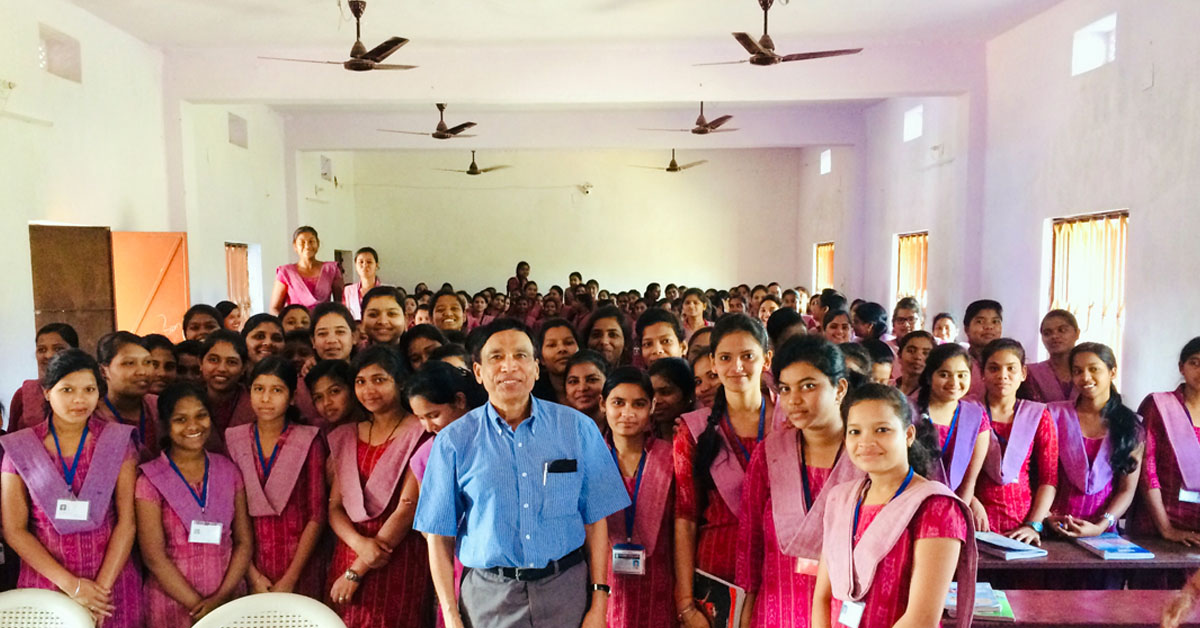Dr Saheb Sahu, FAAP, MPH.
“Education and reproductive health for girls are keys to sustainable development.” United Nations
‘I have seen country after country, all over the world. If you lift up women, they lift up everybody else around them. That ultimately lifts up a community and a country.” Melinda Gates, 2019.
Much of human history and in places (some even now) girls were considered property. They were required to obey their fathers until the day they had to start obeying their husbands. Even well to do and learned people did not think it was worthwhile to educate their daughters. Even fewer could imagine that a girl could become a doctor, an engineer or a priest or a pilot.
In much of the rich world parents now treat their daughters as well as they do their sons. In field after field girls have caught up with boys. However, lower-middle income countries have a long way to go to give parity to girls. Globally, young women now outnumber young men at university. Fifty years ago only 49% of primary school–age girls in lower-middle income countries were in school, compared to 71% of boys. Today the share of both is about 90%. In 1995 almost 60% of girls in south Asia were married before reaching the age 18; that percentage has fallen by half. Girls are healthier too. They are sexually active later and more likely to use contraceptives. Rates of teenage pregnancy have fallen by two –third in South Asia (UN).
However, the statistics for India is not that impressive. The school dropout rate among girls 15-18 is around 30 %( Odisha 34%). 65 % of girls who do not attend schools are either engaged in household works or engaged in begging.
One third of all births in India are to adolescent girls. 27 % of girls in India are married before the age of 18. In poorer states like Bihar, Odisha, West Bengal, Jharkund the rates are close to 40%. According to UN report India bears an economic loss of sixty thousands crores (7.7billion dollars) due to teenage pregnancy.
When societies handle girlhood well, the payoff is outstanding. A girl who finishes secondary school is unlikely to become a child bride or a teenage mother. Studies show that the longer girls stay in school, the more they can earn. Each extra year of secondary schooling increases a girl’s future wages by up to 20%. A girl who earns her own income is less likely to be abused by her husband or family. An educated woman will pass a whole bunch of advantages to her children. She will have fewer children, and invest more in them. They are less likely to die in infancy, grow up undernourished physically or mentally. She will read to them more and help them with their home works. All this means they will learn more and even earn more, as adults.
Adolescence is a crucial juncture for girls. It is when many health problems (pregnancy, anemia, sexually transmitted diseases, and suicide) emerge. It is also is the most important time for brain growth development after infancy.
What should government of India and Odisha do?
1- Reduce the atrocious school dropout rates at all levels of schooling for both girls and boys by providing better school infrastructures including toilets and drinking water and trained teachers who come to class. Educate the community in the importance of girls staying at school.
2-Provide adequate nutrition, health education, contraceptives, sanitary napkins, immunizations and other preventive healthcare at schools.The state of Kerala is already providing many of these services.
3-Provide vocational education to most students who are dropping out of schools.
4- Encourage STEM (science, technology, engineering, and math) for girls and bring them up to parity with boys.
Conclusion
It is important that government of India and Odisha provide more resources and priority to reduce school dropout rates for girls at all levels of schooling. Providing health education, preventive healthcare, and contraceptive will lead to delaying marriage and pregnancy. The government of India’s slogan of ‘Beti Bachao, Beti Padhao’ cannot be achieved without a fundamental right to secondary education backed by measures that make free quality public education accessible to all , especially all girls.
Sources
1- The Economist, Dec19th, 2020,
2-Annual Status Education Report (India), 2019
3-UN News. news.un.org/en/story/2016/03/524132-education-and reproductive-health-girls
PS-Dr Sahu is an NRI Oriya pediatrician settled in USA. His primary interest is to promote girls’ education.



